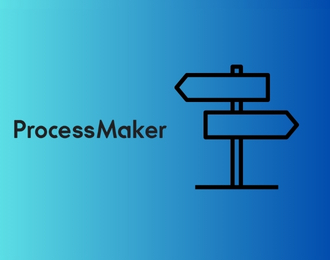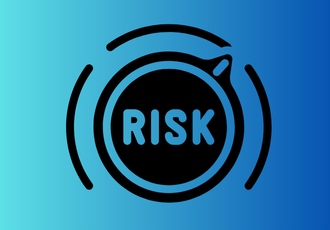2. Kissflow

Kissflow is a low code application development platform. Kissflow Procurement Cloud is designed to automate procurement processes from source to pay.
Common procurement automation use cases include:
-
Strategic Sourcing
-
Procure-to-Pay
-
Supplier Management
-
Contract Management
-
Inventory Management
-
Invoice Automation
-
Spend Analytics
-
Integration
Features
- App Development
Users can design applications from the ground up or use pre-built templates to deploy applications. - Process Automation
Kissflow users can build, automate, and manage processes using a process builder application. - Low Code Development
Kissflow is a low-code platform which means that users need to have some coding knowledge to digitalize processes.
Pricing
Pricing starts at $1,500/month.
Pros
- Easy to use: On G2, customers have noted that the platform's intuitive interface accelerates the onboarding process.
Cons
- Customer service: Users have highlighted that there is a delay in customer responsiveness to resolving technical issues.
- Speed: Some customers have reported performance issues when Kissflow processes large data sets.
- App: One customer has noted that it cannot be downloaded for Android users.
- Integrations: Some customers have pointed out issues with integration, particularly with email integration.

3. Nintex

Nintex is a process intelligence and workflow automation platform that is applicable across multiple use cases.
Its procurement automation features are designed for the entire procurement lifecycle.
Key procurement automation use cases include:
-
Vendor management and supplier management
-
Purchase orders
-
Approval processes
-
Operating procedures
Features
- Workflow Automation
Workflow automation software designed for a wide range of procurement processes. - Process Mapping
A feature designed to optimize, improve and iterate procurement processes. - Process Discovery
Visualize processes for informed decision-making based on process data. - Robotic Process Automation (RPA)
Robotic process automation for after-hours productivity improvement without the need for the human workforce.
Pricing
Pricing starts at $25,000 per year.
Pros
- Easy to use: Customer reviews of G2 have noted that the platform is relatively simple to set up, has a good interface design and the onboarding experience was positive.
Cons
-
Cost: Multiple customer reviews have highlighted the cost may be a challenge for some organizations.
-
Tech Support: Customers have highlighted that technical support may be lacking.
-
Forms: One customer has noted that Nintex Forms are not as powerful as Power Apps.
-
Documentation: Some customers have highlighted that there is a lack of documentation to support the usage of the platform.

4. Keelvar
Keelvar is an all-in-one sourcing platform focused on logistics that provides users with a wide range of price and non-price information from suppliers and automates sourcing for simpler, lower-value spend.
Key use cases include:
-
Transportation and logistics
-
Packaging
-
MRO
-
Direct materials
-
Indirect materials
-
Services
Features
-
Automation for spot buys: Enable end users to source directly from suppliers for spot buys.
-
Scalability: Easily manage events with 100s of line items, 10k+ suppliers and millions of bid data.
-
Efficiency and tracing: Boost agility by conducting a range of sourcing events quickly with intuitive reporting.
-
Decision quality: Reduce supply chain risk by analyzing detailed price and non-price bid inputs to make the best decision for your business.
-
The right solution: Get advanced, user-friendly and intelligent optimization and automation features not found in other generic e-sourcing tools.
-
Extensible: Easily integrate with other upstream and downstream systems via API.
Pricing
Pricing starts at $25,000.00 per year.
Pros
- User Friendly: Reviews from customers on G2, have highlighted that the platform is user-friendly and easy to adopt.
Cons
- Complexities: Customers have noted that the platform does not capture the wide range of complexities needed.
- Functionality: Customers have highlighted that the functionality can be limited and requires product development to improve available features.
- Use cases: Customers have noted that the use case of logistics is limited in their interaction with the platform.

5. Pipefy
Pipefy automates procurement workflows to boost efficiency and maximize cost savings.
Use cases include:
-
Purchase process and purchase requests
-
Accounts payable
-
Vendor management
-
Business contract management
-
Request management
Features
- AI Automation
Conserve resources and shorten SLAs by automating any manual task. Pipefy AI reads documents and extracts data to automate even complex workflows. - AI Co-pilot
Achieve faster results with easy-to-use automation and optimization. Pipefy AI uses natural language to quickly build workflows and generate insights. - AI Agents
Exceed expectations for service delivery. Pipefy AI answers common questions, centralizes information, and helps users submit and track their requests.
Pricing
Pricing starts at $26 per user, per month.
Pros
- Real-time communications: Customer reviews on G2, have highlighted the benefit of enhanced communication and collaboration from the Pipefy platform.
Cons
-
Slow: Customers have highlighted the slow server speed is causing performance issues with the platform.
-
Automation email: Customers have highlighted issues with the automation email and notifications from the platform.
-
Features: Some customers have noted that there is little information about new product development initiatives.
-
Scalability: Customers have highlighted that the platform does not scale with your increased requirements.

6. Procurify

Procurify is a purchasing and AP automation platform with multiple features to reduce costs and optimize productivity.
Use cases include:
-
Spend management
-
Real-time reporting
-
Purchase requests
-
Purchase orders
-
Contract and vendor management
Features
- Purchase Requests: Standardize and streamline the purchasing process from request to payment.
- Purchase Order Management: Ensure proper tracking and approval of every purchase order while capturing all the information your AP team needs.
- Receiving: Streamline the receiving process and easily verify the delivery of goods and services.
- Expenses: Easily create and submit standardized expense requests from desktop or mobile. Accelerate reimbursement and streamline the reconciliation process.
- Contract Management: Conveniently store contracts in a centralized contract repository and easily track current spending against total contract value.
- Budget Management: Give the right people category-level budget visibility across all organizational spending.
- Approvals: Shorten cycle times between requesters and approvers by routing requests to the right teams for approvals.
- Vendor Management: Easily add vendors by completing a vendor request form that captures key information to help with vendor setup.
- Reporting: Generate real-time reports you need to support data-driven decisions in your daily operations.
Pricing
Starts at at $1,000 per month.
Pros
- Easy to use: Customer reviews on G2 have highlighted that the tool is easy to use for tracking expenses.
Cons
- Technical issues: Some users have highlighted that the platform has technical issues and can be glitchy.
- Integrations: Customers have noted that the platform does not integrate well with other tools.
- Usability: Customers have highlighted that the platform is not as user-friendly as it could be.
- Notifications: Customers have noted that notifications can be confusing.

7. Precoro

Precoro is a process automation platform designed for procurement professions.
Features
- Request: Create, collect, and manage all types of purchasing requests
- Approve: Build and customize purchasing workflows of any complexity
- Order: Manage the company's purchases, expenses, payments and stock
- Control: Plan, control, and automate operations and corporate spend
Pricing
- Core: starts at $249 per month
- Automation: starts at $249 per month
- Suite: customized pricing
Pros
- Purchase orders: Customers have commented that Precoro is particularly useful for organizations that process large amounts of purchase orders.
Cons
- Integrations: Some users have noted that Precoro can't connect automatically to some accounting systems.
- Reporting: Customers have highlighted that information is difficult to find in the reporting feature.
- Technical issues: Some reviews have commented that intermittent technical issues do occur with the platform.
- Slow: Users have reported that the software can be slow in processing some forms of information.

8. Zycus

Zycus pitches itself as the world’s first generative AI-powered software for procurement.
Features
- Customizable Workflow Creation: Build tailored workflows with ease, leveraging low-code/no-code solutions and drag-and-drop simplicity
- Adaptive Automation Intelligence: Merlin GenAI dynamically adjusts to policy changes, ensuring continuous, accurate workflow alignments.
- Proactive Procurement Intake: Merlin Assist GenAI Chat on Microsoft Teams revolutionizes intake management, drastically reducing queries and streamlining procurement front door operations
Pricing
Pricing is not publicly available.
Pros
- AI-powered: Users have noted that one of the stand-out features is the AI-powered functionality. This functionally enables users to predict spending patterns based on historical data.
Cons
- Invoices: Users have commented that they find the platform difficult for dealing with invoices.
- APIs: Some customers have suggested that more API options need to be made available.
- User interface: Customers have noted that improvements need to be made to the interface.
- Confusing templates: Users have highlighted the templates can be confusing and difficult to use.

9. Process Maker

Process Maker is a low code process automation with features designed to optimize procurement workflows.
Features
- ProcessMaker Platform: Automate repetitive tasks and mission-critical workflows to optimize resource allocation and maximize productivity. Future-proof your tech stack by integrating with your core systems, breaking data and application silos.
- Intelligent Document Processing: Leverage ProcessMaker IDP and advanced OCR capabilities to turn unstructured data into actionable insights. Replace manual data entry with AI-driven data extraction and classification to reduce errors and ensure data integrity.
- Process Intelligence: Gain end-to-end visibility and complete transparency for all work-intensive processes automatically. Discover and prioritize data-backed automation opportunities to remove or reduce manual work out of your processes.
Pricing
Process Maker offers Standard, Professional and Enterprise pricing tiers. The exact pricing is hidden from public view.
Pros
- Customer Support: Customers have commented that the technical support team is one of the best aspects of the platform.
Cons
- Form design: Users have highlighted that the form user experience needs to be enhanced to improve the software's look and feel.
- Speed: Customers have commented that the software can be slow.
- Integrations: Customers would like to see more integration options available.
- Outdated documentation: Some support documentation can be out of date.

10. Payhawk

Payhawk streamlines and automates purchasing and controls spending from request to payment.
Features
- Capture spend from the beginning: Submit and organise all purchase requests in a centralised database. Collect the necessary purchase details upfront and get visibility on upcoming spend.
- Approve purchase requests and restrict maverick purchases: Sign-off purchase requests before committing budget and keep a grip on your business spend. Get timely request approvals by all the right people through seamless multi-step approval workflows.
- Prevent costly mistakes with automatic 3-way matching: Ensure purchase accuracy and identify discrepancies before issuing payments to suppliers by matching purchase orders, receipt notes, and invoices.
- Gain full visibility into your business purchases and close the books faster: Keep track of all company purchases and get transparency over all commitments including open requests, past, and upcoming payments.
Pricing
Three pricing tiers are offered. Exact pricing is not publically available:
- Premium Cards
- All-in-one Spend
- Enterprise
Pros
- User interface: Customers have noted that the user interface is easy to use and makes onboarding a breeze.
Cons
- Settings: Customers have noted that some settings are only editable by the Payhawk team, which slows down project speed.
- Support: Support tickets could be answered faster.
- Analytics: Customers have commented that the analytics could be better.
- Onboarding: Customers noted that incomplete information during onboarding has delayed their software deployment.

Factors to consider while buying procurement automation software
When choosing procurement automation software, prioritize a user-friendly interface, ease of integration with existing systems, and customizable workflows. Security features are also crucial for protecting sensitive procurement data. Look for scalability to accommodate your organization’s growth and ensure that the software provides comprehensive reporting and analytics for data-driven decision-making.
1. Ease of use
- User-Friendly Interface: Choose software with a simple, intuitive design to minimize the learning curve.
- No-Code/Low-Code Options: Empower non-technical users to automate workflows without needing IT expertise.
2. Integration Capabilities
- ERP and Accounting Integration: Ensure seamless connection with your existing enterprise resource planning (ERP) and financial systems.
- Supplier Networks Integration: The ability to integrate with external supplier platforms improves efficiency.
3. Customization and Flexibility
- Customizable Workflows: Look for software that allows tailoring workflows to meet specific procurement needs.
- Scalability: The software should grow with your business, accommodating an increasing number of transactions and suppliers.
4. Security and Compliance
- Data Security: Opt for solutions that provide strong encryption, access control, and regular security updates.
- Compliance with Regulations: Ensure the software complies with regional procurement and data protection regulations (e.g., GDPR).
5. Reports and Analytics
- Real-Time Insights: Choose software that provides comprehensive reporting tools to track spending, supplier performance, and order status.
- Predictive Analytics: Advanced analytics features that offer forecasting for better strategic decision-making
6. Collaboration and Communication Tools
- Supplier Collaboration: Integrated tools for smooth communication with vendors and suppliers
- Internal Collaboration: Enables multiple teams or departments to work together on procurement processes
7. Automation and AI Capabilities
- Workflow Automation: Ensure the software can automate repetitive tasks like approvals, invoices, and order tracking.
- AI-Powered Features: Some platforms use artificial intelligence to optimize procurement strategies, such as recommending cost-saving opportunities or identifying risks.
8. Vendor Support
- Comprehensive Training: Opt for a provider offering robust training resources and support.
- Customer Support: Look for responsive, 24/7 customer service to handle any issues.
Conclusion
Procurement automation software can support your organization to streamline procurement, improve supplier relationships, improve budget tracking, and save time and money with improved productivity.
If you are interested in fostering stronger supplier relationships, and having your entire procurement process digitalized and ready to shortlist software vendors, join a live demo of FlowForma Process Automation for a window into the art of the possible.
Our team of process experts with showcase what you can achieve with your procure-to-pay process fully automated, streamlined, and delivers the results you need to drive real transformation in procurement.
.png)
.png)
.png)
.png)





.png)
.png) By
By 






